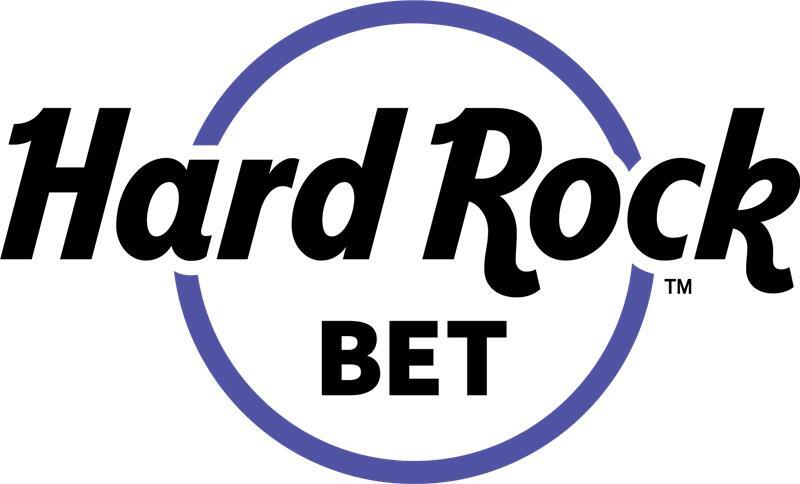Fibonacci Roulette System Guide: Strategy, Rules and Tips
The Fibonacci roulette system is a negative progression strategy based on the famous sequence (1, 1, 2, 3, 5, 8…). Players increase bets after losses and step back two…
Category Ratings
This page contains references to products from one of our advertisers. We may receive compensation when you click on links to those products. Terms apply to the offers listed on this page. For an explanation of our Affiliate Policy, visit this page.
Unlike Martingale, Fibonacci’s slower progression lowers the risk of hitting table limits.
In 2025, U.S. players still favor it for its structure, bankroll control, and suitability for low-stakes, long-session online play.
At a glance: Moderate risk, best for even-money bets on single-zero wheels, and suited to mid-range bankrolls.
Core Principles of the Fibonacci System
The Fibonacci system uses a structured sequence of betting units to manage losses gradually. You begin by betting one unit (e.g., $1). After each loss, raise your next bet to the next number in the series.
After a win, you move back two steps in the sequence. Like the Martingale, this structure aims to balance wins and losses over time, rather than fully recovering every loss with one bet.
Step-by-Step Logic:
- Start with one betting unit.
- Lose → move one step forward in the sequence.
- Win → move two steps back.
- If you win early, stay in low-stake territory; longer loss streaks raise bet size gradually.
- Sequence ends or resets when you’ve moved fully back to the start (first “1”).
Example Outcomes:
- Lose 3x, then Win: Bets = 1 → 1 → 2 → 3 → (Win) → next bet is 1.
- Lose 5x, then Win 2x: Bets = 1 → 1 → 2 → 3 → 5 → 8 → (Win) → back two steps → bet 3.
Historical & Mathematical Background
The Fibonacci system originates from 13th-century mathematician Leonardo of Pisa, who introduced the famous number sequence (1, 1, 2, 3, 5, 8…).
In the 18th century, gamblers adapted it as a staking strategy based on the idea that wins and losses would eventually balance out.
Today, this is loosely linked to the law of large numbers—but in roulette, each spin is independent, and no progression can overcome the built-in house edge.
Expected Value Formula (Even-Money Bet Example):
EV = (0.486 × W) + (0.514 × –L)
Where W = win amount, L = loss amount (standard for single-zero roulette).
Result: EV remains negative over time, regardless of staking method.
Table Requirements and Optimal Wheel Selection in the US
The Fibonacci system works best on even-money bets like red/black or odd/even. For optimal value, choose single-zero European or French roulette wheels, which offer a lower house edge (2.7%) than American versions (5.26%).
French tables with the “La Partage” rule—returning half your stake on zero—reduce the edge to 1.35%, ideal for progression play.
Most U.S.-facing live dealer tables from providers like Evolution or Playtech offer max limits from $500 to $5,000, with certified fairness and responsible gaming standards.
Step-by-Step Walk-Through With Annotated Bet Tracker
Starting Line: 1 – 1 – 2 – 3
Betting Unit: $2
| Spin | Bet Size | Result | Updated Line | Profit/Loss |
| 1 | $4 | ❌ Loss | 1–1–2–3–4 | -$4 |
| 2 | $6 | ❌ Loss | 1–1–2–3–4–6 | -$10 |
| 3 | $10 | ❌ Loss | 1–1–2–3–4–6–10 | -$20 |
| 4 | $16 | ✅ Win | 1–1–2–3–4 | -$4 |
| 5 | $6 | ✅ Win | 1–1–2 | +$2 |
| 6 | $4 | ✅ Win | (sequence cleared) | +$6 |
Result: After three losses and three wins, you’re up $6 with the sequence fully cleared.
How to Sign Up at a US-Licensed Casino and Claim a No-Wagering Bonus
- Choose a Reputable US-Licensed Casino
Look for licensing info at the bottom of the site—ensure it’s regulated by a US regulator such as the PGCB or NJDGE. Read reviews to confirm strong security, fast withdrawals, and clear bonus terms. - Create an Account
Click Register or Sign Up. Enter your name, email, date of birth, and address. Choose a secure password and agree to the site’s terms and privacy policy. - Complete KYC Verification
Upload a valid photo ID (passport or driver’s license) and a recent proof of address (utility bill or bank statement). Some casinos may require a selfie or live verification. - Select a No-Wagering Bonus if possible
Head to the promotions page. Choose a no-wagering welcome offer that includes eligible games like roulette. Carefully read the bonus terms—make sure they clearly state “no wagering.” Some casinos may not include this deal type or restrict roulette gaming. - Make a Qualifying Deposit
Use a payment method accepted in the US, such as a debit card, PayPal, Apple Pay, or Debit/Credit card. Double-check that your chosen method qualifies for the bonus—some methods may be excluded. - Activate and Use the Bonus
Some bonuses are applied automatically, while others require a specific code. Once active, you must play the bonus to withdraw wins. Check for playthrough requirements to ensure you know how to complete the offer correctly.
Bankroll Planning & Stop-Loss Rules
Using the Fibonacci system requires discipline and a conservative bankroll approach to absorb potential losing streaks. A good rule of thumb is to start with at least 40 to 50 betting units.
Example:
- Betting unit: $2
- Recommended bankroll: $2 × 50 = $100
This cushion enables players to progress through the sequence without quickly reaching table limits or depleting their funds.
Stop-loss and stop-win rules are essential. Set a firm loss cap (e.g., 20% of bankroll) and a profit goal (e.g., 30%). Stick to both to protect your funds and avoid chasing.
Tip: Progression betting without firm boundaries increases the risk of chasing losses. Stick to your plan.
Variations & Tweaks Used by Seasoned US Players
Experienced players often modify the classic Fibonacci system to achieve better bankroll control or to suit specific table types. Here are three common variations:
Reverse Fibonacci
Increase bets after wins, decrease after losses.
Pros: Minimizes risk during losing streaks.
Cons: Relies on winning streaks to profit.
Best for: Small-stake, mobile-friendly sessions.
Half-Unit Fibonacci
Use half the base unit per step (e.g., $0.50 instead of $1).
Pros: Slower progression, safer for tight bankrolls.
Cons: Slower recovery and lower profit.
Best for: Casual, long sessions on mobile.
Tiered Resets
After a win streak, reset to halfway up the sequence instead of the start.
Pros: Maintains momentum while protecting profits.
Cons: Requires close tracking.
Best for: High-limit floors or advanced online play.
Each tweak balances risk and reward differently—choose based on session length, risk tolerance, and table limits.
How Does Fibonacci Compare With Other Systems?
While the Fibonacci system uses a gradual, structured approach to recover losses, it’s not the only strategy roulette players rely on.
Below is an objective comparison between Fibonacci and four other major betting systems: Labouchere, Martingale, Reverse Martingale, and Flat Betting.
Fibonacci vs Labouchere
- Labouchere involves a custom number sequence, where each bet equals the sum of the first and last digits.
- Flexibility: Players can design their sequence to match their risk appetite.
- Comparison: Fibonacci uses a fixed sequence, making it simpler, while Labouchere escalates faster.
- Suitability: Labouchere suits players who want more control but are comfortable with higher exposure.
Fibonacci vs Martingale
- Martingale doubles your bet after every loss to recoup losses with one win.
- Comparison: Martingale recovers faster but is far riskier. Fibonacci escalates slower, reducing the chance of hitting table limits.
- Suitability: Martingale is ideal only for players with large bankrolls and high risk tolerance.
Fibonacci vs Reverse Martingale
- Reverse Martingale increases bets after wins, aiming to capitalize on hot streaks.
- Comparison: It avoids chasing losses, unlike Fibonacci, but puts winnings at risk quickly.
- Suitability: Reverse Martingale is best for players looking to ride win streaks and accept high volatility.
Fibonacci vs Flat Betting
- Flat Betting keeps the bet amount the same each round.
- Comparison: It’s the most conservative approach. Fibonacci adds progression logic but demands more attention.
- Suitability: Flat betting is best for beginners or cautious players who want consistent stakes and low risk.
Quick Reference Table
| System | Progression Type | Risk Level | Recovery Speed | Best For |
| Fibonacci | Negative | Moderate | Gradual | Budget-conscious players |
| Labouchere | Negative | High | Fast (if winning) | Custom risk planners |
| Martingale | Negative | Very High | Very Fast | High-bankroll, short-session users |
| Reverse Martingale | Positive | High | Fast (with streaks) | Risk-takers riding win momentum |
| Flat Betting | None | Low | Slow | New or ultra-cautious players |
Explore the complete roulette systems guide for detailed comparisons and tips.
Ideal -US-facing casinos & Live Studios to Practice the System
Caesars Live Casino
Caesars offers American roulette via Evolution, with betting limits ranging from $0.50 to $5,000. Their Live Casino Games interface supports smooth Fibonacci testing, especially for players seeking low-risk, regulated environments.
BetMGM Live Dealer
BetMGM hosts several roulette variations with general limits of $0.50–$10,000, plus rare games like Red Door Roulette. The MGM Rewards system provides incentives, making it a solid option for Fibonacci users. Their Live Roulette platform is compatible with both mobile and desktop devices and boasts strong U.S. licensing.
FanDuel Casino
FanDuel offers European roulette from Evolution and Playtech, with betting limits ranging from $0.10 to $5,000. La Partage is uncommon, but recurring promos help offset streaks. The Live Casino Games section is intuitive, making it ideal for practicing low-stakes Fibonacci sessions with minimal friction.
Explore the main casino games page for more titles and game types.
Common Misconceptions and Pitfalls
The idea that “wins must balance losses” is a fallacy—roulette outcomes are random and independent. No betting system, including Fibonacci, alters the house edge. Believing that progression guarantees recovery leads to poor bankroll management.
Common traps include overconfidence after short win streaks and increasing your base unit mid-session, both of which accelerate losses. Success depends on discipline, not chasing outcomes or assuming the odds will “turn around.”
Tips & Tricks for Getting Started with Fibonacci
- Use even-money bets (red/black, odd/even).
- Start with a small betting unit and stick to it.
- Set clear stop-loss and stop-win limits before playing.
- Don’t increase your base unit mid-session.
- Practice on free roulette games on our operator or Roulette pages first.
- Track bets carefully and stay disciplined.
- Remember, the house edge always applies.
Other Applications of Fibonacci
The Fibonacci system is also used in Blackjack, where players adjust bets following the same sequence based on wins and losses. It helps manage bankroll and control risk during play. For a detailed guide, see our dedicated Fibonacci Blackjack page.
Responsible Gaming
Responsible gaming is essential to enjoying gambling safely. Managing your budget and monitoring your bankroll help prevent overspending and reduce risk. Always understand the odds and remember that no betting system guarantees profit.
Never deposit more than you can afford to lose, and practice strict discipline by setting and adhering to personal limits on time and money spent. Taking regular breaks and using self-imposed restrictions can help maintain control over your gaming habits.
If you feel gambling is becoming a problem, seek support early. Many organizations provide free, confidential help, including the National Council on Problem Gambling and Gamblers Anonymous.
For more detailed advice and tools, visit our Self Exclusion page. Prioritizing harm reduction ensures that gambling remains a fun and controlled activity.
Main Takeaways
The Fibonacci Roulette system is a betting strategy based on the famous Fibonacci number sequence. In this system, each bet is the sum of the two previous bets.
It’s designed for even-money wagers like red/black or odd/even on single-zero roulette wheels, making it popular for its slower, more cautious progression compared to aggressive systems like Martingale.
The goal is to recover losses gradually rather than chase quick wins. Players increase their bet by moving forward in the sequence after losses and step back after wins.
Variations exist for different risk levels, but overall, the Fibonacci strategy is best suited for players seeking steady, controlled play over extended sessions.
Key Elements:
- Based on the Fibonacci number sequence progression
- Applied to even-money bets on single-zero wheels
- Gradual loss recovery, not fast win chasing
- Requires strict bankroll and risk management
- No guarantee to overcome the house edge
- Variations for different risk tolerances
FAQs:
- What is the basic staking rule in the Fibonacci system?
Start with one betting unit; after each loss, move one step forward in the Fibonacci sequence; after a win, move back two steps. - How many betting units should I start with for a low-risk session?
Typically, start with 1 or 2 units to minimize exposure. - Does the system work better on red/black or odd/even wagers?
It works equally well on both since both offer nearly 50% win chances. - How is Reverse Fibonacci different from the standard progression?
Reverse Fibonacci increases bets after wins and decreases after losses, aiming to maximize winning streaks. - What happens if I hit the table’s maximum stake before a win occurs?
You must stop or switch to flat betting; continuing is not possible, risking large losses. - Can I combine Fibonacci with “La Partage” tables to cut losses?
Yes, “La Partage” reduces losses on even-money bets, improving recovery speed. - Is the system suitable for Lightning or Quantum roulette with multipliers?
Not ideal, as multipliers increase volatility and disrupt progression strategies. - Do US online casinos allow auto bet scripting for Fibonacci sequences?
Generally, no; most prohibit automated betting tools to ensure fair play. - Will using this system breach bonus wagering or max bet terms?
It may, especially if bets exceed the maximum limits or violate bonus conditions—always check the terms. - How do I know when to reset the progression or walk away?
Reset after a net profit or upon reaching stop-loss/win limits; walk away to maintain discipline. - Does long-term play with Fibonacci change the house edge?
No, the house edge remains unchanged; no system can consistently overcome it in the long term.
For almost two decades, Sadonna has remained at the forefront of the gambling industry in the US and abroad, covering the latest news and legal updates. Sadonna’s goal is to provide sports bettors and casino players with premium content, including comprehensive details on the US industry.













